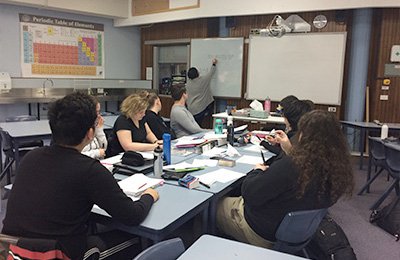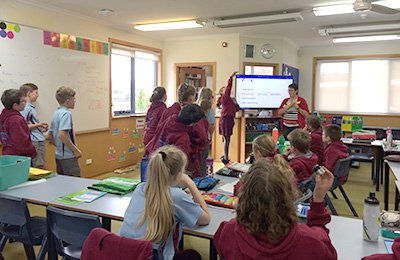2019 Japanese-Language Assistants’ Report: As a Teaching Assistant in Tasmania
The Japan Foundation, Sydney (Hobart)
SHIBANUMA Lisa
When you hear the word "Australia," what kind of map do you think of? I think it varies from person to person, but did you know that Australia has a small island to the bottom right of the mainland? It's called Tasmania, and I live on that island.
It has been a year since I was dispatched here as a Japanese-Language Assistant (hereafter referred to as "Assistant"). I visit schools from primary to senior secondary school on the island of Tasmania and team-teach with local teachers at each school. Here I would like to share with you some of the work I am doing in Tasmania.
Working as an Assistant in Australia
In Tasmania
As a teaching assistant, I visit various schools, from primary to senior secondary schools and team-teach with teachers from each school. In order to run richer Japanese classes, I introduce resources and suggest materials and class activities according to teachers' requests. Since I am at a different school each day, it is difficult to prepare for the classes, but I have created highly versatile PowerPoint files and other materials that can be edited and used according to the progress and needs of each school.
In addition, I am involved with the local teachers' network, participating in regular meetings and organizing and judging speech contests.

Class at University (2nd and 3rd year senior secondary school students)
Working with People at the Japan Foundation, Sydney
I have been working with people at the Japan Foundation, Sydney, to organize a Japanese-language teacher training that is held twice a year. In this training, I am in charge of a session in which I introduce "new things from Japan" and how to connect those things to class activities. Every day I collect material for that and think of class activities to use with that material, which is a lot of work but also a lot of fun. I can also observe sessions conducted by Japanese-Language Senior Specialists and Japanese-Language Specialists, which is a great learning experience for me.
I have regular Zoom meetings with Japanese-Language Senior Specialists, in which I report on my activities in Tasmania and get advice from them. I am able to communicate with people at the Japan Foundation, Sydney, anytime, so I feel that they have provided me with a great deal of emotional support as a lone dispatched worker.
Japanese Language Education? Cross-cultural Understanding?
As mentioned earlier, Tasmania is far from the mainland, so there are not as many foreigners as in Australia in general. Especially in the northern and western regions, many students say it is their first time to see a foreigner, not just their first time to see a Japanese person. Also, some schools, such as primary schools, have only 30 minutes of lesson time. On the other hand, some schools are motivated to participate in speech contests and actively use ELLA programs (language programs for preschoolers) to focus on language learning from early childhood. I spent many days thinking about what was really required of me as an Assistant in each case of foreign-language education among a great variety of learning environments. I thought that teaching Japanese meant teaching and practicing new grammar and vocabulary every day, and that ideally, by the time I left the classroom, the students would have acquired one new piece of Japanese knowledge. However, something one teacher said to me made me rethink my own view of language education. That was, "As language teachers, it is our job to teach our students 'what the world is.'" I think this was the first time I properly understood that, depending on the environment, there are times when cross-cultural understanding is more important than language knowledge.
Now I am conducting class activities while working with local teachers to think about what kind of Japanese language input I can provide through cross-cultural understanding, and what kind of knowledge is necessary for the students at each school. Of course, some schools focus on language knowledge, and for those schools, I suggest teaching materials and classroom activities that meet their expectations.
Future Activities
In Tasmania, it is a problem that the number of foreign-language learners is declining year by year. In order for students to continue to learn Japanese and for as many people as possible to become active as Japanese language teachers in the future, I would like to think about how to support each teacher's teaching style and, as a result, improve students' motivation to continue learning.

A Grade 6 class (sixth-grade of primary school) plays a mini-game
- What We Do Top
- Arts and Cultural Exchange [Culture]
- Japanese-Language Education Overseas [Language]
- Japanese-Language Education Overseas [Language] Top
- Learn Japanese-language
- Teach Japanese-language
- Take Japanese-Language Test
- Know about Japanese-language education abroad
- The Japanese-Language Institute, Urawa
- The Japanese-Language Institute, Kansai
- Japanese-Language Programs for Foreign Specified Skilled Worker Candidates
- Japanese Language Education for Japanese Children Resident Overseas and for the Descendants of Migrants
- Archives
- Japanese Studies and Global Partnerships [Dialogue]
- JF digital collection
- Other Programs / Programs to Commemorate Exchange Year
- Awards and Prizes
- Publications
